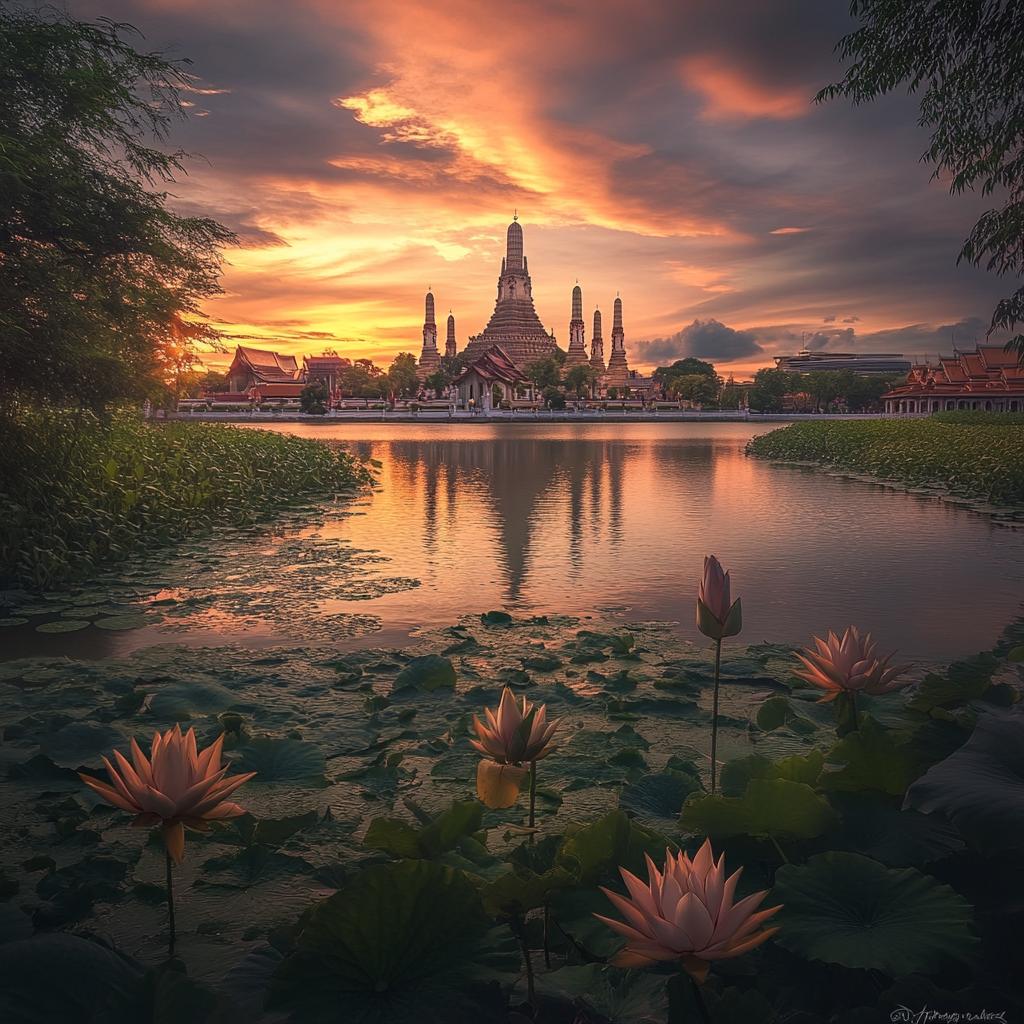In an exciting bid for global acknowledgement, Thailand takes a significant step towards earning UNESCO World Heritage status for its cherished Wat Arun temple. Recently, the Cabinet sanctioned its inclusion on the UNESCO World Heritage Tentative List, a decision that not only highlights the temple’s striking architectural legacy but also underscores its cultural significance during the Rattanakosin Kingdom era.
During a pivotal meeting, Culture Minister Sudawan Wangsuphakijkosol unveiled the proposal, stating that the Phra Prang of Wat Arun Ratchawararam – often honored as the ‘Identity of the Rattanakosin Kingdom’ – would be formally submitted. This nomination underscores the temple’s exquisite Phra Prang architecture, a staple of the Rattanakosin era and a rare emblem of this structural style in Southeast Asia.
“The Phra Prang of Wat Arun stands tall as a testament to Thailand’s opulent cultural heritage and architectural magnificence,” stated Minister Wangsuphakijkosol. “Securing its place on the World Heritage Tentative List would mark a monumental stride in safeguarding our national gems.”
The immediate course of action is to forward the necessary nomination documents to the UNESCO World Heritage Centre in Paris by month-end. This submission ensures that Wat Arun’s candidacy is featured on the agenda for the forthcoming World Heritage Committee meeting, scheduled for June to July.
Meanwhile, the Ministry of Culture has tasked the Fine Arts Department with safeguarding the temple and its environs. A collaborative effort with Wat Arun’s administration aims to uphold international conservation standards. This preparatory phase involves conducting archaeological surveys, devising a management blueprint for the temple’s premises, and actively involving Thai communities in conservation endeavors.
Having Wat Arun on the Tentative List for a year precedes the submission of a detailed preliminary report due by September 2026. It paves the way for the ultimate, comprehensive nomination dossier for full UNESCO World Heritage status.
Following a recent tremor on March 28, the Fine Arts Department promptly deployed structural engineering and ancient monument preservation specialists to perform an in-depth stability examination of the Phra Prang. These experts are committed to assuring that the temple’s physical integrity remains robust ahead of the vital UNESCO assessment, according to an account from The Nation.
As Wat Arun embarks on this prestigious journey towards attaining UNESCO prominence, it serves as a vibrant tapestry of Thailand’s historical and architectural narrative. Its journey doesn’t just lend itself to cultural preservation but also showcases Thailand’s dedication to maintaining the awe-inspiring beauty and heritage of its national treasures.


















I’m thrilled to see Wat Arun getting the recognition it deserves! It’s such a stunning piece of architecture.
While it’s beautiful, I think there are more pressing issues in Thailand than focusing on temples.
I understand that perspective, but cultural heritage can boost tourism and economy, which might help address other issues.
Cultural sites often promote community identity and pride. It’s important for preserving history!
I’m curious, are there any downsides to getting a site listed as a UNESCO World Heritage site?
This is a smart move by Thailand! Wat Arun is iconic and absolutely deserves the spotlight.
But sometimes increased tourism can lead to damage. Hopefully, the Thai authorities are prepared for that.
I think nominations like these may ignore local voices. What’s being done to involve communities in this decision?
Seeing Wat Arun potentially as a World Heritage Site is a dream come true. It might also encourage maintenance and preservation.
True! But does anyone know how well Thailand is handling the risk of earthquakes damaging it further?
I read they have specialists on it. They’re probably doing their best given the situation.
That’s good to hear. It’s such a historical symbol; losing it would be a tragedy.
I’m all for cultural preservation, but does UNESCO designation mean it’ll become easier to access or more protected?
I’m reminded of how many heritage sites elsewhere get overrun with tourists. It takes a toll over time.
That’s a legitimate concern. Managed tourism is key to preserving the site while still sharing it with the world.
Increased visitors might lead to commercialization, which dilutes the cultural authenticity of such places.
Or it can also lead to more cultural appreciation if managed correctly!
Do you think its cultural significance is still relevant today, or is it just more of a tourist attraction at this point?
Any step taken to place a spotlight on heritage can feel strategic, especially if aiming for a tourist boost in revenue.
I just hope that if it gets listed, the authorities keep the temple accessible to locals and not only cater to tourists.
The involvement of local communities in maintaining cultural sites is crucial. Are locals supportive of this nomination?
UNESCO World Heritage status can mean international grants for conservation. A win for Wat Arun if managed well.
Hopefully, any funding received will go directly to preservation rather than administrative overhead.
Exactly. There’s a lot at stake for maintaining authenticity and the temple’s integrity.
For some locals, the site might hold spiritual significance; so any changes due to tourism should respect that.
Absolutely, the balance between development and preservation can be delicate but necessary.